This is an image of Sybille von Cleves as a young woman in 1526, painted by Lucas Cranach the Elder.
It is not the woman who is named Sybille von Cleves. It is a painting. It is an image of the public persona (image) of the young woman named Sybille von Cleves (but not the woman). Confusing? Not really. As an aristocrat, her identity was a complex of social codes and not an individual life as would be known in Thuringia today, such as that of this model posing for a spa in Weimar.

I give the contrast to point out that that is also not an image of a young woman in Weimar. Rather, it is an image of a model posing to create a particular image of a woman in Weimar, which other women, and perhaps men, can emulate, should they so wish. Compare that to the image Cranach painted of Sybille von Clees on her wedding day in Weimar in 1530.
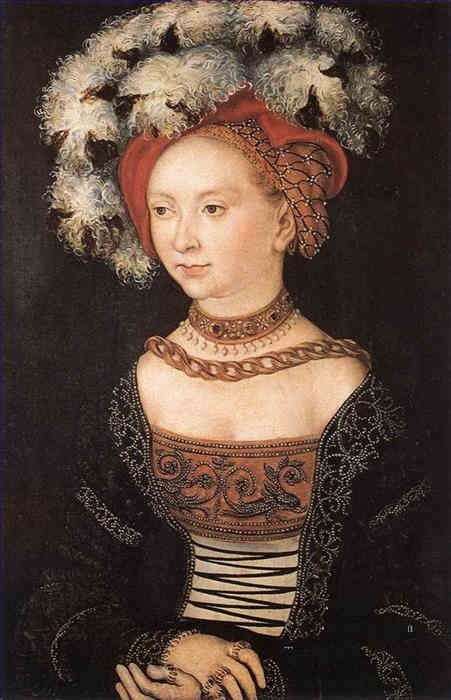
The mood and dress, and their symbolism, are all different than they were in Cranach’s first image, including the floral and Christian symbolism. Cranach has captured a different emotional register here, which is recognizable today as deeply modern and human, like this:

Lost Woman, Weimar
The modern, today, as you can see from the above image, is to strip the body away from artificial images and use them as pure psychological codes, kinds of behaviour modification modules, to nudge the inaccessible body into action. The idea of a body, or of an embodied spirit, which stretches back to classical Greece …
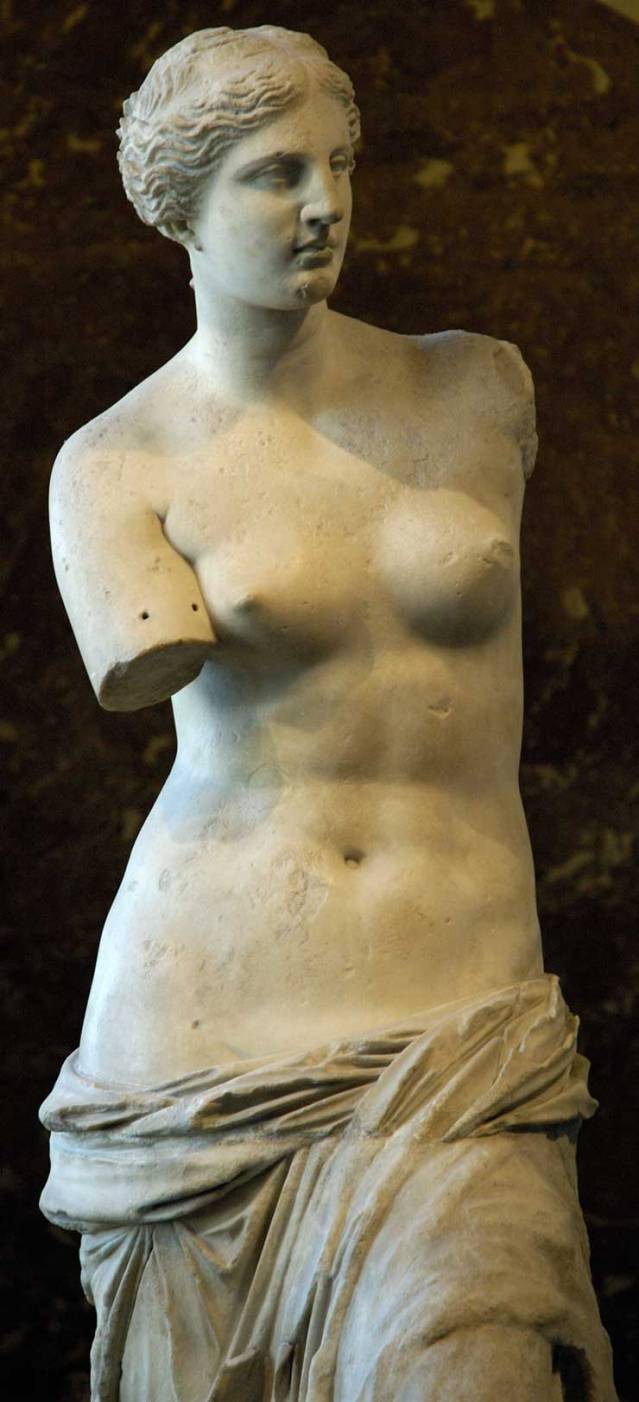
Venus de Milo c. 100 B.C.
…which stressed human over spiritual form …

Isis (Egyptian goddess) c. 600 B.C.
… is no longer present. The body and the self are, today, no longer mutually identifiable.
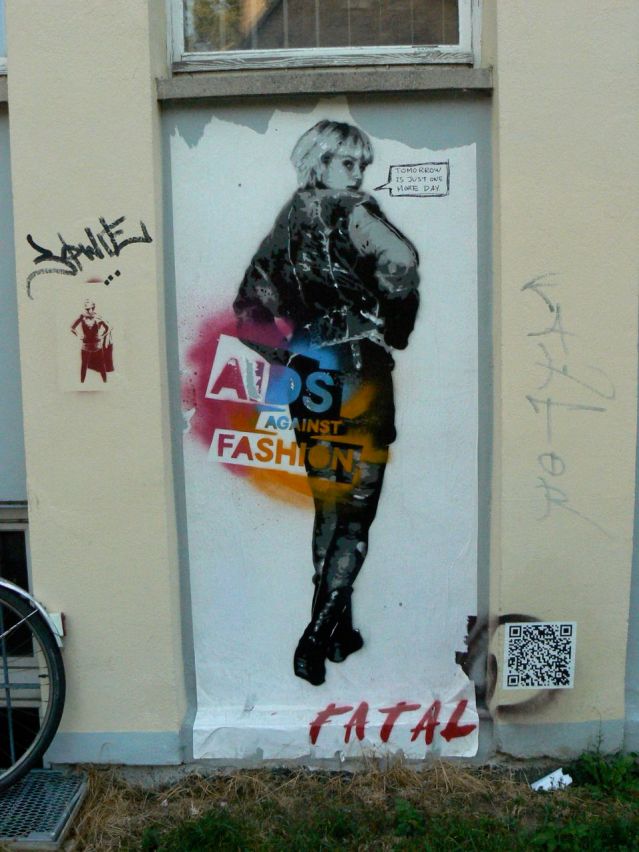
Women in Weimar with Bar Code, 2010
The modern is, however, five hundred years old. The other side of it is that this …

…is just not the woman known as Sybille von Cleves and, without her context in her social and political milieu, it is also not the public persona of the woman named Sybille von Cleves. Period. It is an artifice, as much as her dress is an artifice, as much as this image from behind Weimar’s Museum of Contemporary Art …
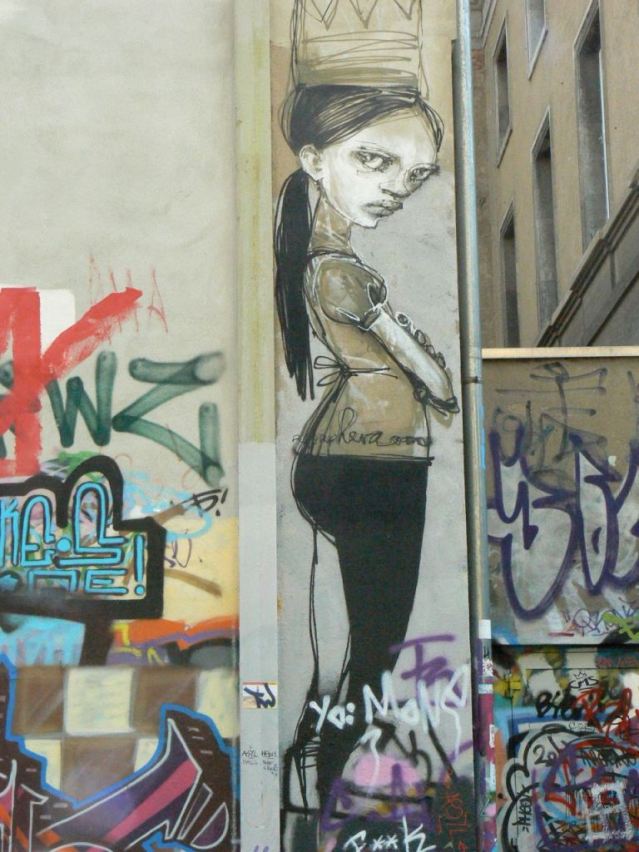
…or this Weimarer onion market woman …

… are all forms of public address, or art, or display. All contemporary Western human self identity, in fact, springing out of Renaissance interpretations of medieval or ancient identity systems, is subject to the same issues, which include concepts of dress and undress but are not expressions of “self”. That’s a romantic notion. It looks like this:

Perhaps it appears that I jest. Believe me, I don’t. I mean to point out that just as Frankenstein’s monster is cobbled together from many different bodily forms, so is the modern human image…
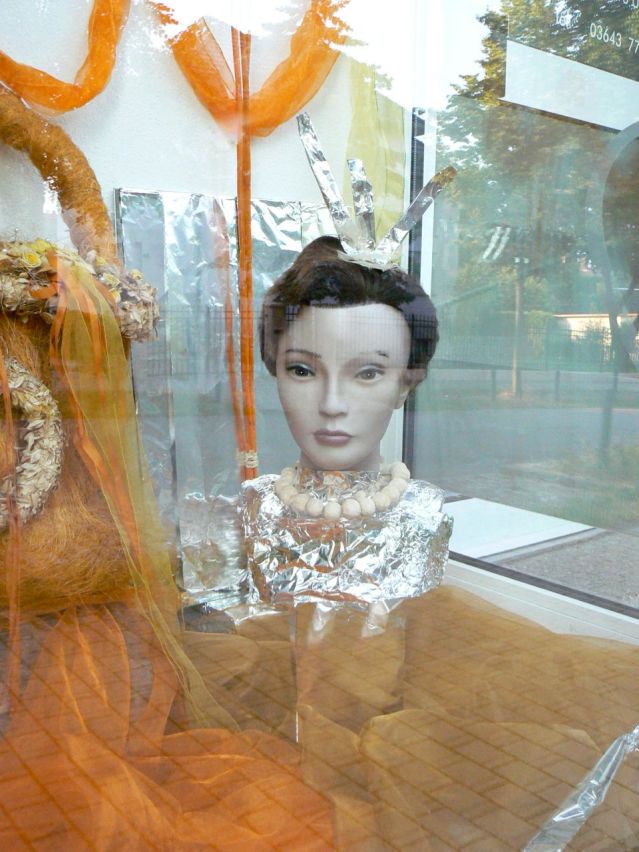
Shop Window Queen with Tinfoil, Weimar, June 2010
…which is, in turn, a purification of the Renaissance one…
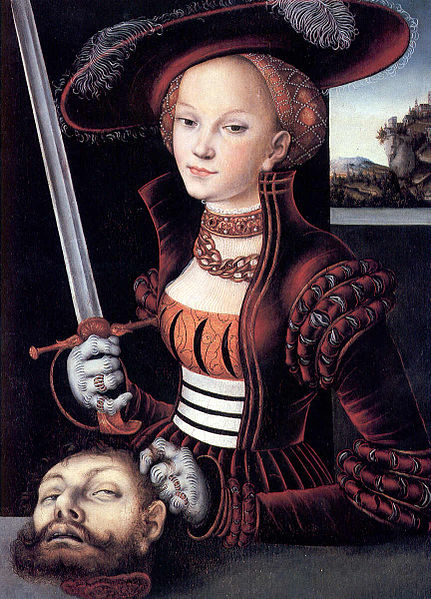
Lucas Cranach the Elder, Judith with the Head of Holofernes, 1530
Same neck braid, same hair net.
In the above image, the skeleton gloves are a nice medieval throwback, but, then, it was the medieval period that Cranach was updating…

Lucas Cranach the Elder: Madonna Under the Fir Tree, 1510
… just as today’s women in Weimar are updating a Renaissance image (and a number of romantic ones as well.)
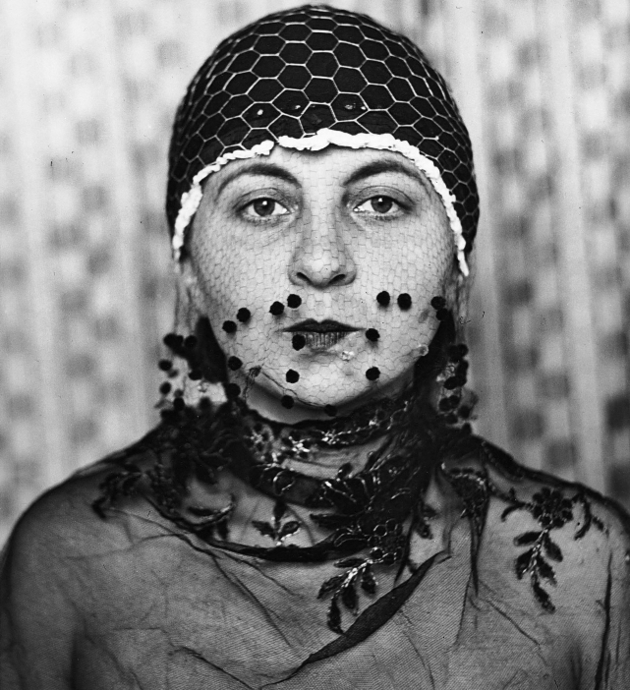
Gertud Arndt, Bauhaus, Weimar, 1923
Putting on the mask of Sybille von Cleves!
Cranach had a method. He started with a classical goddess…

Lucas Cranach the Elder, Venus, December 31, 1831
Perhaps you can notice that the hair net that we’ve been seeing in all those other women does not belong to them? It is Venus, rising through their bodies! Source.
…and built up from there, with layers of dress, custom and memory. Somewhere within all of that there was a woman, but you’d never be able to locate her, because she lived in the animation of all of these additions (or clothings). Let me clarify: Images of woman …

SS Camp Guards Under Arrest, Bergen Belsen, 1945
… are not women, not even those SS guards above. They are, in their essence, not SS guards. They are women, for better or worse, living within particular social constraints and animating them; they are this series of animations, stretching back through childhood and into their biological beginnings. Let me clarify: I am not saying that women are defined by the male gaze, although an understanding of the extent and force of that gaze is vital for understanding the difficult and often repressed position of women and feminine agency in history; I am pointing out that real women had to make real choices in real contexts, and that the choices in the past were no more or less free than they are today. It is the same for men. Humans make social choices and inhabit them and animate them, just as they inhabit and animate body images like this city:

Skating in Toronto
Let me show you what I mean, with a few propaganda photos from Nazi Germany, illustrating the politically dictated roles for women in the Union of German Girls (the female version of the Hitler Youth.) Notice how Sybille von Cleves’ neck braid has become a braid of wheat hanging from this image of a woman’s head, as if artificially plunked on there. Sly? You bet it is. Many artists employed by the Nazi Propaganda Ministry were resolutely set against the regime, and were lying low in what they considered relatively harmless and relatively uncompromising jobs. Not that much different than Cranach, really.
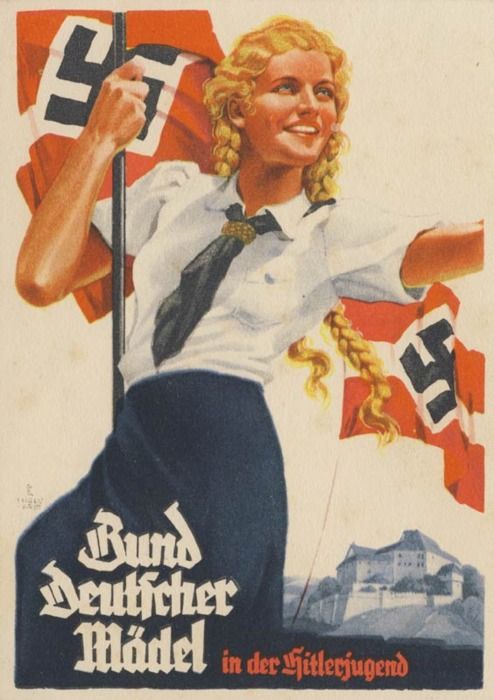
Welcome to Eve of Weimar, c. 1935. No German woman ever had hair this colour. Well, actually, no woman anywhere, ever, with the 1930s bob cut extending into patriotic braids like bars of gold or beams of the sun.
Beams of the sun? Yes.

Nazi Propaganda Postcard: “Either-Or”
Nudist camps were a vital part of North German culture in the 1920s.
Again, perhaps you think I jest. No. Here is one version of Cranach’s Adam and Eve, with the golden apples of the sun hanging from the Tree. In it, you might note that Eve’s dress, such as it is, is an extension of male (snakelike) desire, and a means of expressing a modern gaze within the bounds of a culture of symbols many thousands of years old.
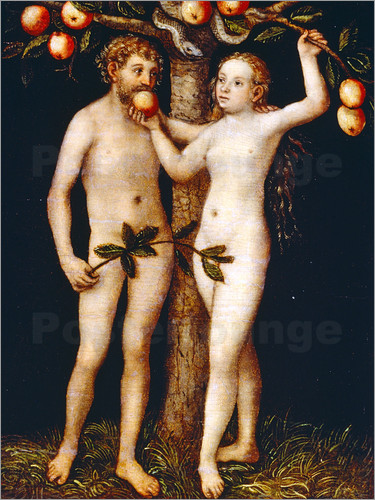
If the Church Hadn’t Had a Sense of Humour, Cranach Could Have Been Burned for an Image Like This, But it Did
These chains of symbols, and the complicated social ways in which people escape their constricts, are complicating factors in the development, furtherance and portrayal of human identity. For instance, here’s another young woman Cranach painted in 1525:
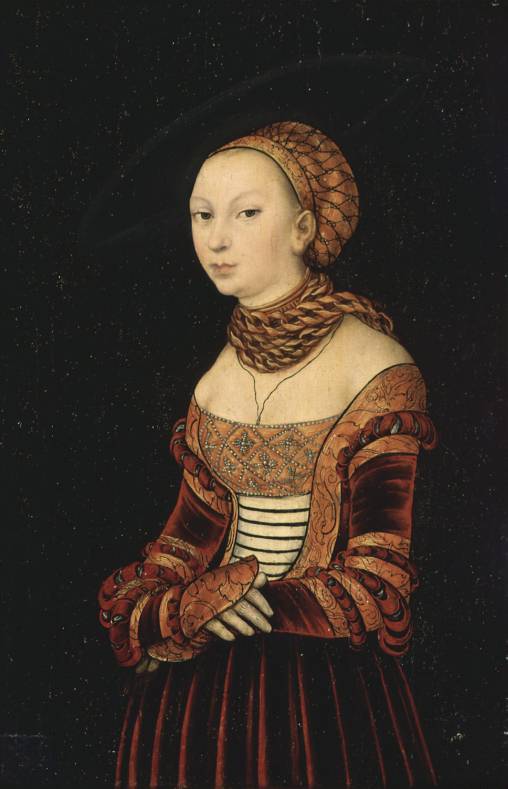
Same braided decoration, same cathedral ceiling hair net…
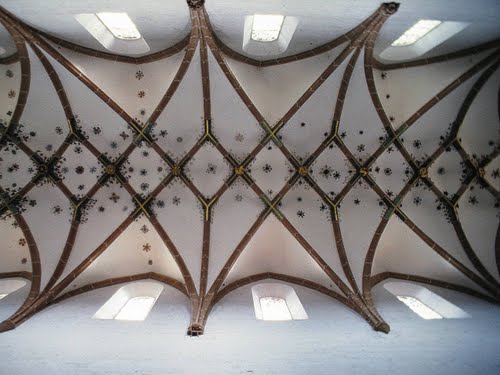
Cloister Church Ceiling, Monastery of Maulbronn
…same style of dress. Or, here again, in his 1530 image of Salome:
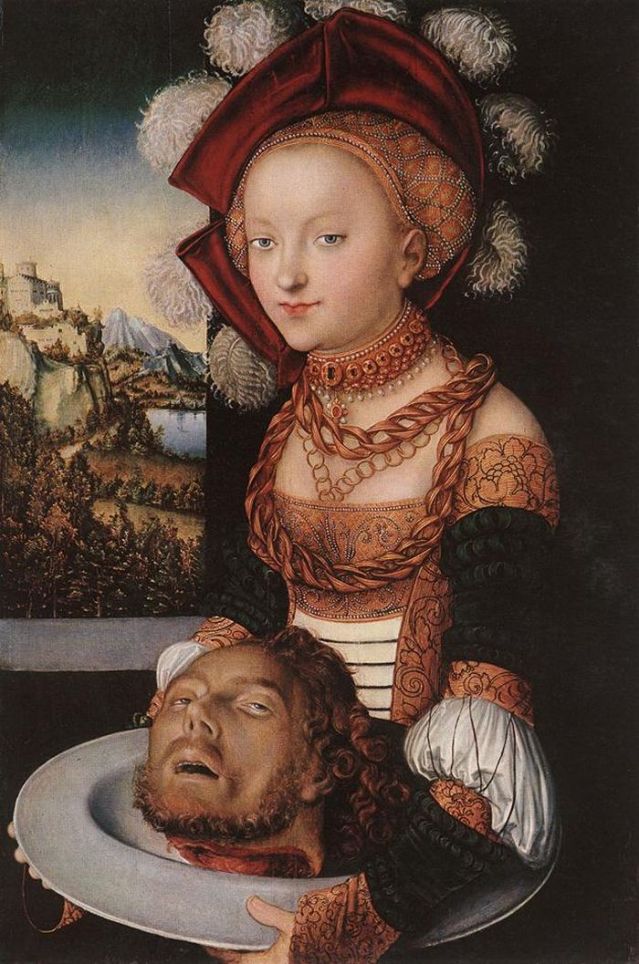
Take all these stock artifices away? Cranach had trouble with that. Here’s his Lucretia from 1530…

Those decorative elements and their bondage are still there! Darn it! It was important in these images to portray that they were not images of women, but stock images, like the cards of a tarot deck …

… or the eternal, platonic images of Heaven, upon which medieval and Renaissance philosophy held that earthly images were based. Humans are the embodiments of such images, in the same way that the Greeks saw them as embodiments of ineffable spirit, and the Germans of 18th century Weimar saw them as embodiments of the Greek process: not humans, but projects for humans. Put it this way: this image of Sybille von Cleves, for all the humanity it displays and all the character it shows …
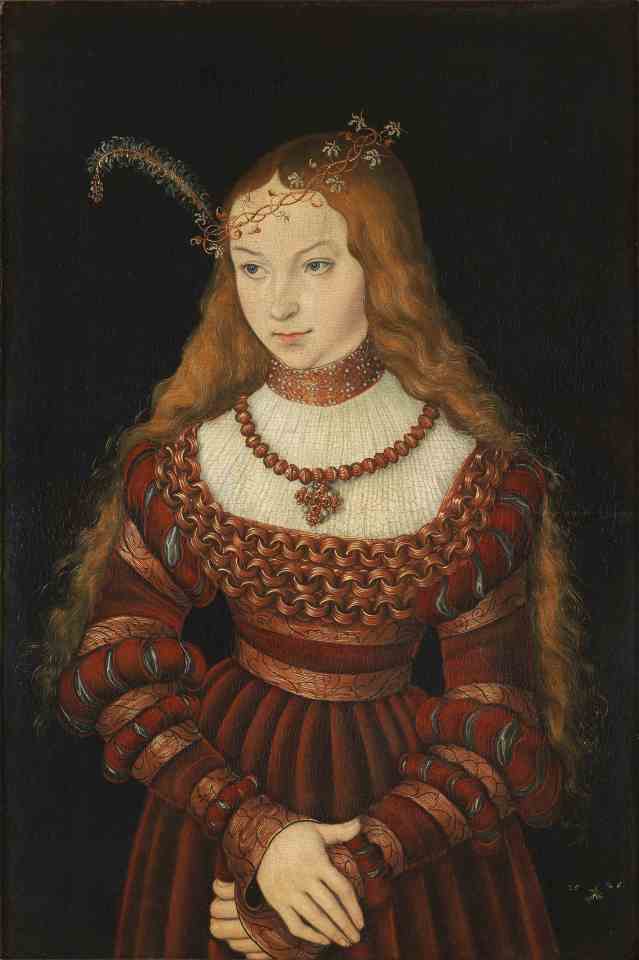
… is also a harness for women, and its painter, Lucas Cranach the Elder, knew that, and worked that reference into the image and all the images he made. Succinctly, the self is clothing, just as for a Renaissance or Baroque prince the land was a series of poetic interventions and poetry was the skill used for training his mind to be able to effectively administer his state, but that’s to jump ahead. Right now, I’d like to lay down only the foundation idea that all is not what it seems. This, for instance …
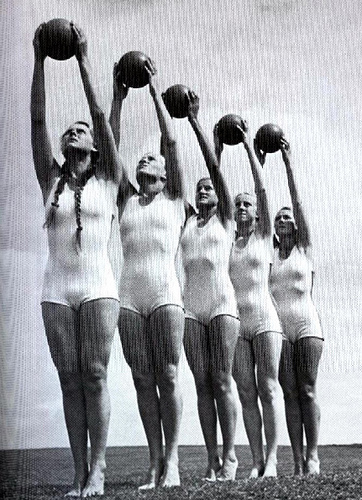
Girls from the Union of German Girls, at Gymnastics
… is many things, many of which are ugly, but the great Austrian novelist Stefan Zweig leaves for us the record that the freedom to have, use and express a body, as physical equals to young men, granted to young women by the Nazis, was a revolutionary and liberating improvement over the conditions in Vienna a generation before, in which young, middle class women knew nothing (0% and 0 means 0) about their bodies and often went into psychological trauma on their wedding nights, although 20% of women in Vienna worked the streets as prostitutes. That is perhaps what modernism has given to us all: bodies, not as spiritual projections but just as bodies. There are some troubling environmental consequences to this, which run deeply through the modern American (and now post-modern global) notion “creativity” and what it means in a technological society. To get at those consequences and some possible fixes is why I have initiated this discussion over the turning of the year (to be continued), because this is also not what it seems …

Yellowstone, North Entrance, September
… and words and memory are also necessary to bodies, even though they’d rather eat cake and sing dumb songs and be beautiful and famous simply for their never-simple gestures, like, you know?

An Image of Taylor Swift (or Venus) Making an Image of Eve (or Taylor Swift) Wearing Sybille von Cleves’ Hair Net!
Gasp.














Looks like Cranach was obsessed with hair nets. My grandma used to wear one. The hair net she wore used to hang under the rough cement ceiling of the coal cellar like a spider’s web every time she went in that cellar for whatever reason. And when she lost too many hairpins her braids came down. Long thin grey braids. Definitely not like beams of gold, rather like heavy rain just not as wet. She had been born shortly after the turn of the century.
LikeLike
My grandmother, born at the turn of the century, used kerchiefs in her hair. My mother gave that up around 1968. The modern age had arrived at last.
LikeLike